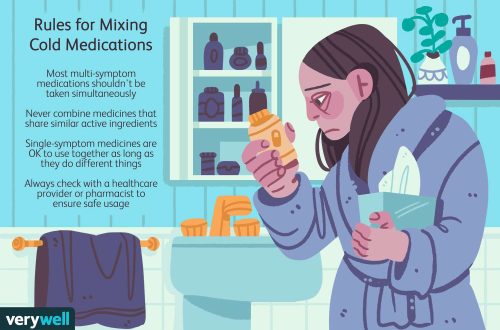Best Time of Day to Tan: Maximize Your Glow!
The best time of day to tan is early morning or late afternoon for optimal results. These times offer milder sun exposure, reducing the risk of sunburn while still providing a healthy glow.
Tanning during these hours allows for a gradual and safe process, minimizing skin damage. Additionally, the sun’s rays are less intense during these periods, making it easier to control and monitor your exposure. By choosing the right time to tan, you can enjoy the benefits of sunlight while protecting your skin from harm.
Remember to always wear sunscreen and stay hydrated to ensure a safe and effective tanning experience.
The Golden Hour For Tanning
Morning Benefits: Gentle Rays And Fresh Start
Early morning tanning offers gentle sunlight for a gradual tan.
- Less intense UV rays reduce risk of skin damage.
- Perfect for a refreshing start to the day.
Evening Glow: Cooling Temperatures And Softer Sunlight
Cooler evening temperatures make tanning more comfortable.
- Soft evening sunlight gives a subtle glow to the skin.
- Relaxing way to unwind after a long day.
Sun’s Peak Vs. Skin’s Peak
Achieving the perfect tan boils down to Sun’s Peak vs. Skin’s Peak. Mid-morning to early afternoon offers the best time to tan due to peak sun intensity for optimal results. The skin’s ability to absorb UV rays efficiently peaks during this time window.
When it comes to tanning, it’s crucial to know the best time to expose your skin to the sun. Sun’s peak and skin’s peak are two different things, and understanding the difference is vital for achieving a healthy, golden glow. Sun’s peak refers to the time of day when the sun is at its highest point in the sky, usually between 10 a.m. and 4 p.m. Skin’s peak, on the other hand, is the time when your skin is most receptive to UV rays.Midday Intensity: High Uv Index Considerations
During the sun’s peak hours, the UV index is at its highest, making it dangerous to expose your skin to the sun for prolonged periods. The midday intensity of the sun’s rays can cause skin damage, including sunburn, premature aging, and even skin cancer. It’s crucial to avoid tanning during these hours, especially if you have fair skin or are prone to sunburn.Synchronizing Skin’s Optimal Tanning Time
Synchronizing your skin’s optimal tanning time with the sun’s peak hours is crucial for achieving a healthy, golden glow. The best time to tan is in the morning or late afternoon when the sun’s rays are less intense. During these hours, your skin is better able to absorb UV rays, resulting in a more even and long-lasting tan. To determine your skin’s optimal tanning time, consider your skin type and the UV index. Those with fair skin should avoid tanning during the sun’s peak hours and limit their exposure to the sun. It’s also important to use sunscreen with a high SPF and reapply every few hours to protect your skin from harmful UV rays. In conclusion, understanding the difference between sun’s peak and skin’s peak is crucial for achieving a healthy, golden glow. By synchronizing your skin’s optimal tanning time with the sun’s rays, you can achieve a beautiful, even tan while protecting your skin from harmful UV rays. Remember to always practice safe tanning habits and protect your skin from the sun’s harmful rays.Duration Matters
The best time of day to tan is during the mid-morning or late afternoon when the sun’s rays are not as intense. It’s important to limit exposure to 15-30 minutes to avoid sunburn and skin damage. Timing your tanning session can help you achieve a golden glow while minimizing the risk of sunburn.
Short And Sweet: Effective Tanning Timeframes
When it comes to tanning, it’s essential to understand the optimal duration for safe and effective results. The best time for tanning can vary depending on your skin type and the strength of the sun’s rays. Let’s explore the ideal timeframes for achieving a sun-kissed glow without overexposing your skin to harmful UV radiation.
Overexposure Risks: When Enough Is Enough
Overexposure to UV rays can lead to sunburn, premature aging, and an increased risk of skin cancer. It’s crucial to avoid spending too much time in the sun, especially during peak hours when the sun’s rays are at their strongest. By understanding the risks of overexposure, you can make informed decisions about when to limit your tanning sessions to protect your skin’s health.
Seasonal Tanning Tactics
Summer Strategies: Peak Season For Sunbathers
Summer is the prime time for soaking up the sun’s rays and achieving that golden tan. The best time to tan in the summer is between 10 AM and 4 PM when the sun’s rays are strongest. It’s essential to apply a broad-spectrum SPF sunscreen and take regular breaks in the shade to prevent sunburn. Hydrating the skin with a moisturizing lotion after tanning helps maintain a healthy glow.
Winter Woes: Tanning In Colder Months
During winter, when the sun’s intensity is reduced, tanning can be more challenging. Consider using indoor tanning options such as tanning beds or sunless tanning products to maintain a bronzed look. Moisturize regularly to combat the drying effects of cold weather and opt for self-tanning lotions to achieve a sun-kissed appearance without prolonged sun exposure.
Uv Index Insights
When it comes to achieving a golden glow, understanding the UV index is crucial. The UV index provides valuable insights into the intensity of the sun’s ultraviolet radiation at different times of the day, helping you optimize your tanning sessions for the best results.
Reading The Uv Index: A Tanning Guide
The UV index is a numerical scale that measures the strength of the sun’s ultraviolet radiation. It ranges from 1 (low) to 11+ (extremely high), with higher values indicating greater potential for skin damage. By checking the UV index for your location, you can determine the optimal time to tan and minimize the risk of sunburn.
Timing Your Tan Around Uv Fluctuations
Understanding the fluctuations in the UV index throughout the day is essential for safe and effective tanning. By aligning your tanning sessions with lower UV index periods, such as early morning or late afternoon, you can enjoy the sun’s benefits while reducing the risk of overexposure.
Skin Type Specifics
Discover the optimal time for tanning based on your skin type. Whether you have fair or dark skin, timing is crucial for a safe and effective sun-kissed glow. Understanding your skin’s needs ensures a golden tan without the risk of sun damage.
Skin Type Specifics Tailoring Time for Different Skin Tones Fair Skin: For fair skin, the best time to tan is before 10 AM or after 4 PM to avoid the intense midday sun. Use SPF 30 or higher to protect against sunburn. Medium Skin: Mid-morning to early afternoon is ideal for tanning with SPF 15-30. Limit exposure to 30-40 minutes to prevent burning. Olive Skin: The afternoon sun between 2 PM and 4 PM is suitable for tanning. Apply SPF 10-15 and limit sun exposure to 45-60 minutes. Dark Skin: Tanning can be done from late morning to late afternoon with SPF 8-10. Take breaks to avoid excessive UV exposure. Sensitive Skin: Adjusting Your Tanning Schedule Sensitive Skin: Tanning early in the morning or late in the afternoon with high SPF is crucial for sensitive skin. Limit exposure to 15-30 minutes and consider using protective clothing.Sun Protection Essentials
For optimal tanning results, the best time of day to tan is during early morning or late afternoon. Sun protection essentials like sunscreen with high SPF are crucial to prevent skin damage while achieving a healthy glow. Remember to reapply sunscreen every two hours for effective protection.
Spf: Your Tanning Time Ally
Sunscreen is your best friend when it comes to tanning. It’s important to choose a sunscreen with a high SPF (Sun Protection Factor) to protect your skin from harmful UV rays. The recommended SPF for tanning is between 30 and 50. Always remember to apply sunscreen at least 30 minutes before sun exposure. This will give the product enough time to absorb into your skin and provide the necessary protection.Reapplication And Coverage: Ensuring Even Protection
Reapplication is key to ensuring even protection during tanning. It’s recommended to reapply sunscreen every two hours, or more frequently if you’re swimming or sweating. Don’t forget to cover all areas of your body, including those that are often overlooked like your ears, the top of your feet, and your scalp. If you’re using a spray sunscreen, make sure to rub it in to ensure even coverage. Remember, the best time of day to tan is during the early morning or late afternoon when the sun is less intense. Always wear sunscreen with a high SPF, and don’t forget to reapply every two hours. By following these sun protection essentials, you can enjoy a safe and successful tanning experience.Alternative Tanning Options
For the best tanning results, consider the early morning or late afternoon as the optimal times to tan. The sun’s UV rays are less intense during these times, reducing the risk of sunburn and skin damage while still achieving a healthy glow.
Sunless Tanners: When The Sun Doesn’t Shine
When the sun is elusive, sunless tanners offer a safe alternative for achieving that golden glow.
Tanning Beds: Weighing The Pros And Cons
Consider the advantages and disadvantages of tanning beds before opting for this method.
Looking for alternative tanning options? Let’s explore sunless tanners and tanning beds.
Sunless Tanners: When The Sun Doesn’t Shine
Sunless tanners are perfect for getting a tan without sun exposure.
Tanning Beds: Weighing The Pros And Cons
Understand the benefits and risks associated with using tanning beds.
Frequently Asked Questions
What Time Of Day Do You Tan The Fastest?
You tan the fastest between 10 am and 4 pm when the sun’s UV rays are strongest.
Is It Better To Tan In The Morning Or At Night?
Tanning in the morning is better as the sun’s rays are milder, reducing the risk of sunburn.
Is 30 Minutes A Day Enough To Tan?
Yes, 30 minutes a day can be enough to tan, but it depends on various factors such as skin type, UV intensity, and time of day. It is recommended to gradually increase tanning time to avoid burns and skin damage.
It’s important to wear sunscreen and protective eyewear during tanning sessions.
What Is The Best Time Of Day To Get Sun?
The best time to get sun is in the morning or late afternoon. This is when UV radiation is lower, reducing the risk of sunburn.
Conclusion
The best time to tan is early in the morning or late in the afternoon. This allows you to avoid the harshest sun rays while still getting a good dose of vitamin D. Remember to always wear sunscreen and protect your skin from UV damage.
Enjoy tanning responsibly!

